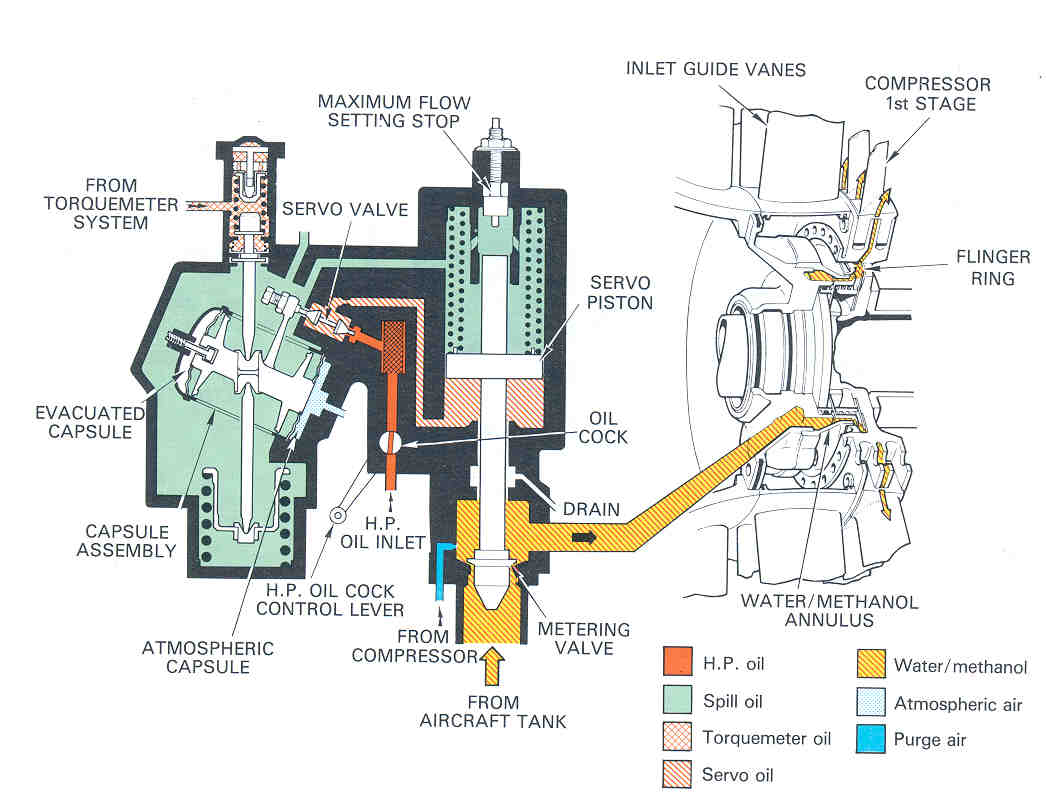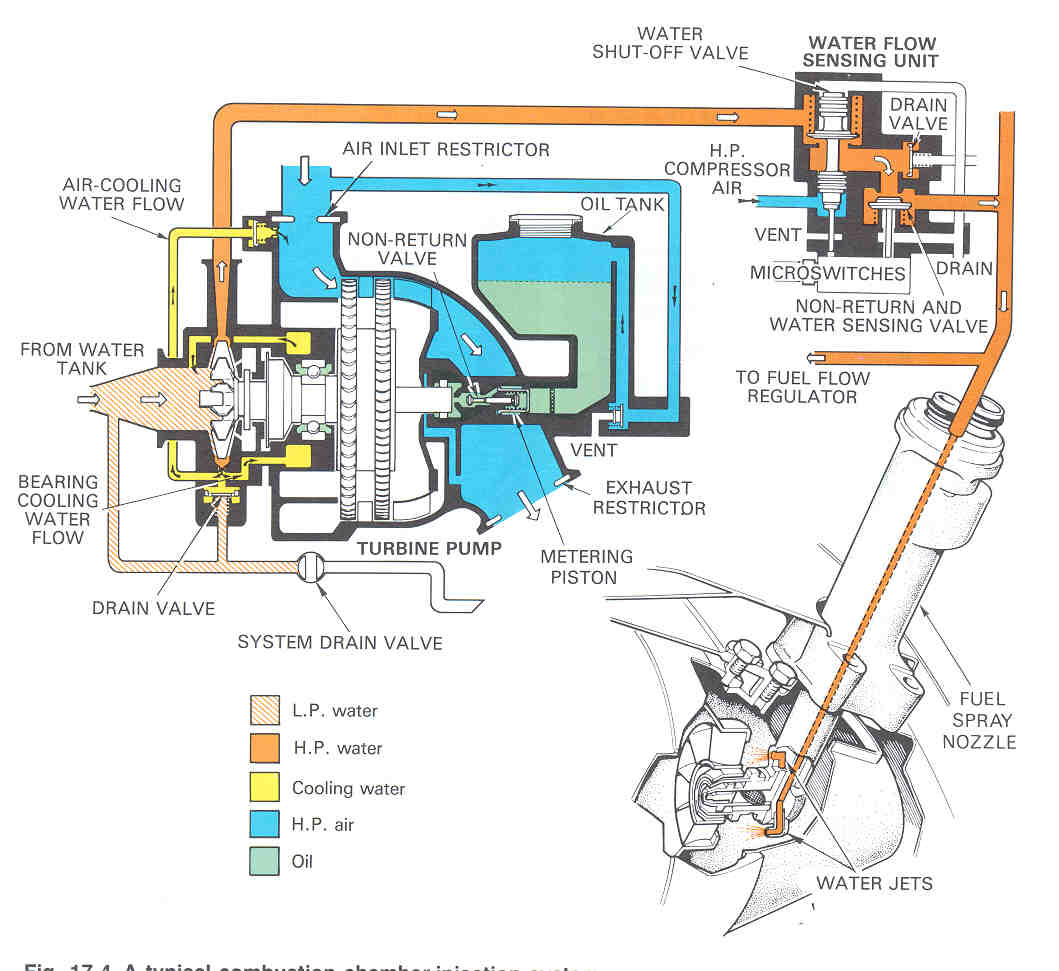 |
When the water/coolant is sprayed into the compressor inlet, the
temperature of the air is reduced, increasing the density of the
compressor inlet air, and consequently, the thrust is increased.
The system shown to the left is a typical compressor inlet injection
system. When switched on, the coolant is pumped to a control unit which
measures the flow of the mixture to the compressor inlet. A servo valve
regulates the supply of oil using engine oil as an operating medium. The
degree of the servo valve opening is sensitive to propeller shaft torque
oil pressure and to atmospheric air pressure. |
 |
The injection of coolant into the combustion chamber inlet
increases the mass flow rate through the turbine. The pressure and
temperature drop across the turbine results in an increase in
pressure in the jet pipe, giving additional thrust. Also, the
consequent reduction in turbine inlet temperature allows the fuel
system to increase the fuel flow to a valve giving an increase in
rotational speed of the engine. This provides even more additional
thrust.
The system shown is a typical combustion chamber injection system.
Coolant flows to an air-driven turbine pump sending it to a water
flow sensing unit. From there it passes to each fuel spray nozzle
and is sprayed onto the flame tube swirl vanes. This cools the air
passing into the combustion zone. The fuel control system senses the
water pressure, which will automatically reset the engine speed
governer to give a higher maximum engine speed. The water flow
sensing unit will only open when the difference between the
compressor delivery air pressure and the water pressure is correct. |
 Back to the Purdue AAE Propulsion main page.
Back to the Purdue AAE Propulsion main page.
 Back to the Turbine Engine Basics page.
Back to the Turbine Engine Basics page.
 Back to the Purdue AAE Propulsion main page.
Back to the Purdue AAE Propulsion main page.
 Back to the Turbine Engine Basics page.
Back to the Turbine Engine Basics page.

